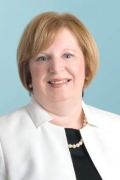Leveraging the maintenance of certification (MOC) requirements for better patient outcomes and higher reimbursements may now be easier because of recent policy changes at the American Board of Pediatrics.
“I think pediatricians have seen MOC [requirements] as onerous, but it’s a two-edged sword,” Dr. Francis Rushton, medical director of South Carolina’s QTIP (Quality Through Innovation in Pediatrics) Program, said in an interview. “This whole issue about forcing practitioners to think about whether they are achieving the health care goals that they intend for their patients – from a philosophical viewpoint, that’s good. From a bureaucratic standpoint, it’s been a real pain because in the past, to get their certification, pediatricians had to do things that didn’t necessarily mean anything to them in their practice.”
Following a barrage of complaints, the ABP earlier this year retooled parts of its MOC program, especially Part 4, which focuses on quality improvement and accounts for 40% of recertification credits every 5 years.
“Now pediatricians can decide what matters to them in their practice, and then they can apply quality-improvement science to reach those goals,” Dr. Virginia A. Moyer, ABP vice president of maintenance certification and quality, said in an interview.
Notably, the ABP has simplified its qualification process for “do-it-yourself” quality-improvement initiatives in practices of 10 members or less. Previously, requirements for Part 4 DIY offerings were largely based on the “types of projects coming out of large institutions,” and largely missed the mark for smaller practices, Dr. Moyer said. Fees have been lowered by as much as half and scaled to practice size as well.
Importantly, ABP now offers Part 4 credit for to any practice that is National Committee for Quality Assurance (NCQA) accredited as a patient-centered medical home. “That’s huge,” Dr. Moyer said. “There are probably 8,000 pediatricians in the country who are eligible for that, and the standards are rigorous.”
Allowing pediatricians to earn two distinctions with one task is a way to “use bureaucracy to [pediatricians’] advantage so they learn something new, improve outcomes, and potentially increase their reimbursements,” said Dr. Rushton. “And it gives pediatricians the tools they need to deal with the marketplace’s new focus on value.”
The American Academy of Pediatrics also supports streamlining accreditation activities. “The changes the ABP has made to their MOC Part 4 guidelines will make it easier for pediatricians to obtain MOC credit for quality improvement they are doing in their own practices,” Dr. Sandra G. Hassink, AAP president, said in an interview. Dr. Hassink said that in 2016, the AAP will launch an online tool to help smaller practices either lead or partner with other small groups to apply MOC-eligible quality improvement projects that “are based on accepted improvement science and methodology” to their practices.
Indeed, over the past 2 decades, advances in quality-improvement science has allowed more precise measurement of patient outcomes, helping to supplant fee-for-service payments with value-based care. According to Dr. Wendy Davis, associate director of the National Improvement Partnership Network and a professor of pediatrics at the University of Vermont, Burlington, this means that pediatricians who completed their training prior to the early 1990s often have the largest learning curve when it comes to targeting quality-improvement goals and crafting a plan to reach those goals.
“An accountable care organization overseeing health care delivery across many different practices and settings has to be sure that what they say is important to practice aligns with what the clinicians think is important,” said Dr. Davis. “Then the clinicians need to understand how to identify, measure, and create improvement processes to ensure what they believe will help improve patient care is also what they are evaluated against for reimbursement.”
The new MOC Part 4 pathways should help, according to Dr. Moyer. “We have tried very hard to use the kinds of measures that people would be collecting anyway. For pediatricians just getting started in [quality improvement], it really makes sense for them to do the kinds of projects that their insurers or accountable care organizations are pushing them to do.” Receiving the MOC credit for these projects, she said, will be evidence of their progress.
DIY quality-improvement credits are based on projects that follow a basic formula: identifying a gap in quality, stating the goal for decreasing or eliminating that gap, planning for how to do that, proving the plan was enacted, and demonstrating it was measured sequentially at least three times. Projects are typically prospective and can count for Part 4 credits more than once if the project continues over the course of more than one accreditation cycle. Small practices within larger institutions may also use this DIY model, or may show proof of having participated in institutional portfolio quality improvement programs.
For all physicians in a group to receive MOC credit, Dr. Moyer said they must be able to demonstrate they were “intellectually engaged” in all phases of the project. Participation is verified through a physician’s self-attestation that includes a brief, written “reflection” on the experience, and attestation from the project leader, Dr. Moyer said.
Dr. Chuck Norlin of the department of pediatrics at the University of Utah, Salt Lake City, said that he wonders if that will be enough to evaluate whether a physician was a “bystander, or was substantively involved in the process. Measuring self-attestation is challenging. It seems like it might be too easy for one or two physicians to do all the work.”
While quality improvement is not new in pediatrics, the timely reporting of the data is. “Using the MOC as a carrot does not seem to have increased the interest in participating in quality improvement by much, but it has made it much easier to get data back from the participating clinicians who now see not getting their MOC credit as the stick,” Dr. Norlin said.
On Twitter @whitneymcknight



